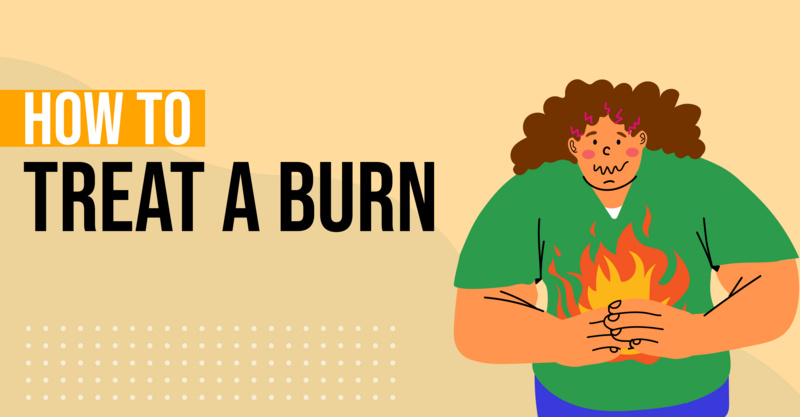Key Points
- The healthcare landscape is evolving, offering patients a variety of care options including traditional doctors offices, retail clinics, urgent care centers, and emergency rooms. The best place to seek treatment depends on the condition.
- Doctors offices are ideal for scheduled visits, minor conditions, and chronic disease management. They have access to patients' medical histories and are preferred for annual exams and general medical advice.
- Retail clinics, typically staffed by nurse practitioners or physician assistants, can handle common healthcare concerns like burns, rashes, infections, and minor lacerations. They are convenient, have minimal wait times, and can write and fill prescriptions on-site.
- Urgent care centers are equipped to handle more advanced cases than retail clinics or doctors offices. They have on-site diagnostic equipment and extended hours, making them suitable for conditions like stomach pains, cuts requiring stitches, sprains, broken bones, and major infections.
- Emergency rooms are designed for severe and life-threatening conditions. They have a full medical team, including surgeons, and provide on-site diagnostic tests, surgical suites, and 24/7 bedside care.
The world of healthcare is continually evolving, particularly with the introduction of the healthcare reform initiatives. Patients have options. Traditional doctors offices, retail clinics, urgent care centers and emergency rooms (as well as a number of other provider types) are able to treat patients for anything the come in with.
But where is the best place to go when you have a particular condition?
The chart below was created to help answer that questions by grouping conditions under the four tiers of care centers, most of which accept walk-in patients. As you can see, a doctors office is great for scheduled visits, minor conditions and chronic disease management. An emergency room, on the other hand, is much more suited for severe and critical injuries and illnesses including trauma, heart attacks and strokes. It is what is in the middle that is often confusing.

There is no doubt a lot of confusion around walk-in clinics. In fact many healthcare consumers still ask themselves, "What is a Walk-in Clinic?" Or, "What is an urgent care center?" Here are some quick facts to help articular the difference and where you should go when you need medical attention.
When to Go to the Doctors Office
With the shortage of primary care doctors in the county, it can often be difficult to get an appointment with your physician in a reasonable amount of time. However, they are still the preferred venue for annual exams, general medical advice and chronic disease management. Assuming you use them appropriately and routinely, they have medical records on you and your family and can treat you know your full history, not just a moment in time.
When to Go to to the Retail Clinic
Retail clinics are typically staffed with nurse practitioners (NPs) or physician assistants (PAs) and not medical doctors. However, they are still able to address many common healthcare concerns including burns, rashes, infections, allergies and minor lacerations. Given that most are located within a pharmacy, they are also able to write and fill prescriptions on-site and give most routine immunizations. Retail clinics are also generally convenient (commonly called convenient care clinics), usually don't have much of a wait and are great alternatives for doctors offices when it is only the small stuff you're worried about.
When to Go to the Urgent Care Center
An urgent care center is one step up from a retail clinic. Most staff physicians, have x-ray and other diagnostic equipment on-site and are open extended hours including most weekends and holidays. This allows urgent care centers to handle more advanced cases than a retail clinic or even a doctors office. In fact, recent studies have indicated that as many as 50% of the most common diagnoses at emergency rooms could be handled more cost effectively at urgent care centers. Stomach pains, cuts requiring stitches, sprains and broken bones, major infections and nearly any other non-life-threatening condition is well suited for an urgent care.
When to Go to the Emergency Room
The ER is built for life-threatening cases. If your injury or illness is severe, don't hesitate. Call 911 immediately or get to the closest emergency room. They staff a full medical team, including surgeons, to treat a wide range of medical conditions that require on-site diagnostic tests, surgical suites and 24/7 bedside care.
Frequently asked questions
What are the different types of healthcare providers and what conditions can they treat?
The different types of healthcare providers include traditional doctors offices, retail clinics, urgent care centers and emergency rooms. Doctors offices are ideal for scheduled visits, minor conditions and chronic disease management. Retail clinics, usually staffed by nurse practitioners or physician assistants, can address common healthcare concerns like burns, rashes, infections, allergies and minor lacerations. Urgent care centers are equipped to handle more advanced cases like stomach pains, cuts requiring stitches, sprains and broken bones, major infections and nearly any other non-life-threatening condition. Emergency rooms are designed for severe and critical injuries and illnesses including trauma, heart attacks and strokes.When should I visit a doctor's office?
A doctor's office is the preferred venue for annual exams, general medical advice and chronic disease management. They have your medical records and can treat you knowing your full history.What is a retail clinic and when should I go there?
Retail clinics are typically staffed with nurse practitioners or physician assistants and can address many common healthcare concerns including burns, rashes, infections, allergies and minor lacerations. They are usually located within a pharmacy and can write and fill prescriptions on-site. They are a great alternative for doctors offices when you're only worried about minor conditions.What is an urgent care center and when should I go there?
An urgent care center is a step up from a retail clinic. They have x-ray and other diagnostic equipment on-site and are open extended hours. They can handle more advanced cases than a retail clinic or even a doctors office, including stomach pains, cuts requiring stitches, sprains and broken bones, major infections and nearly any other non-life-threatening condition.When should I go to the emergency room?
The emergency room is built for life-threatening cases. If your injury or illness is severe, you should call 911 immediately or get to the closest emergency room. They have a full medical team, including surgeons, to treat a wide range of medical conditions that require on-site diagnostic tests, surgical suites and 24/7 bedside care.What is the difference between a walk-in clinic and an urgent care center?
A walk-in clinic, often referred to as a retail clinic, is typically staffed with nurse practitioners or physician assistants and can handle common healthcare concerns. An urgent care center, on the other hand, is usually staffed with physicians and is equipped to handle more advanced cases, with x-ray and other diagnostic equipment on-site.Can retail clinics provide prescriptions and immunizations?
Yes, most retail clinics are located within a pharmacy and are able to write and fill prescriptions on-site. They can also provide most routine immunizations.Can urgent care centers replace emergency rooms for non-life-threatening conditions?
Yes, recent studies have indicated that as many as 50% of the most common diagnoses at emergency rooms could be handled more cost effectively at urgent care centers. However, for severe and life-threatening conditions, an emergency room is the most appropriate place to go.
![Care Continuum: Where to Go When Your Sick or Injured [INFOGRAPHIC]](https://d1kve3ll6vvkpr.cloudfront.net/dir/media/W1siZiIsIjIwMTQvMDYvMDUvMTJfNDNfMzhfODI1X3doZXJlX3RvX2dvLmpwZyJdLFsicCIsInRodW1iIiwiMTI0MHg2NDAjIl0sWyJwIiwiZW5jb2RlIiwianBnIiwiLXF1YWxpdHkgNzAiXV0/file.jpg?basename=Care+Continuum%3A+Where+to+Go+When+Your+Sick+or+Injured+%5BINFOGRAPHIC%5D&sha=d0cfc4176513bfc0)









